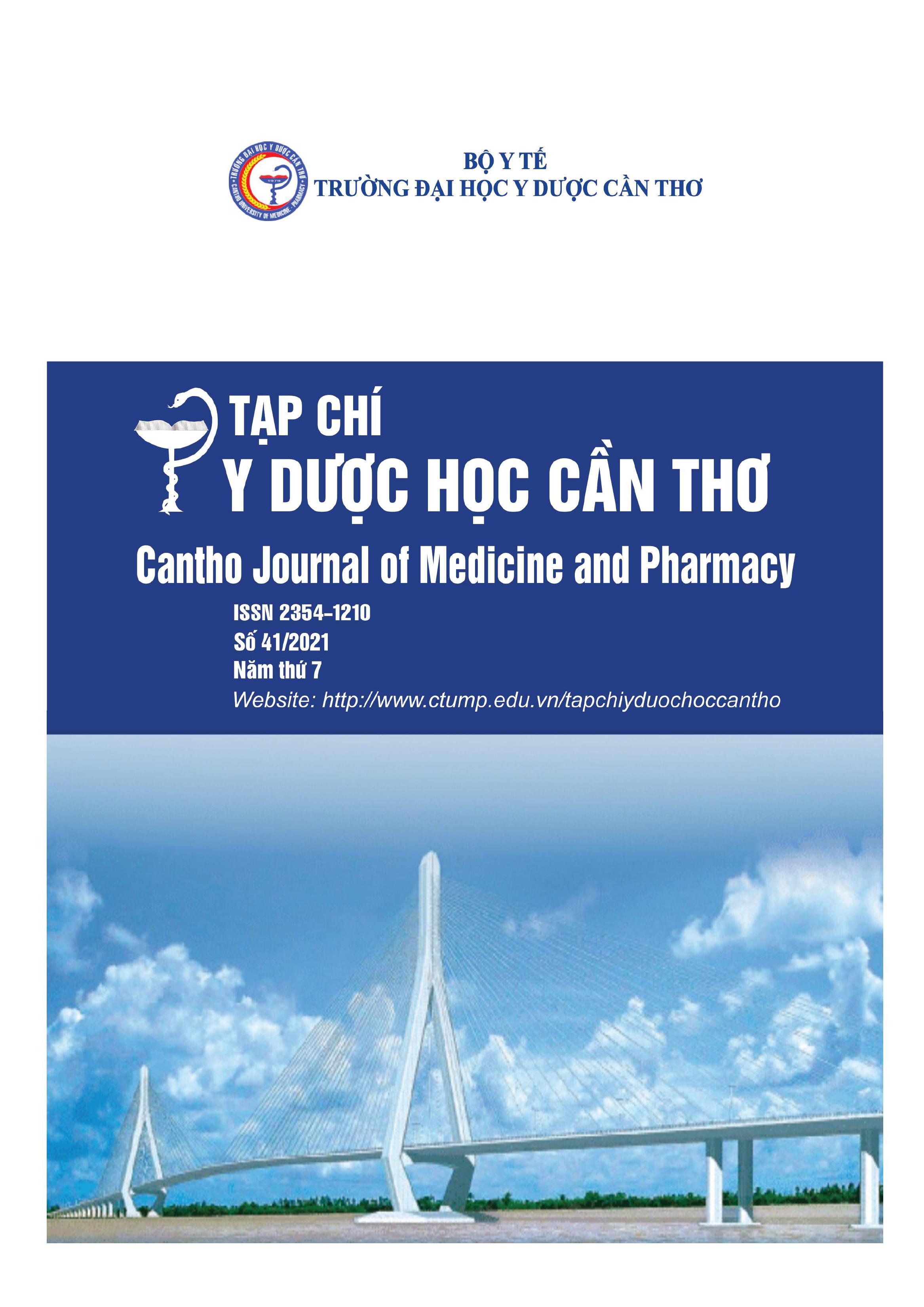EVALUATION THE RESULTS OF KNEE REPLACEMENT SURGERY AT CAN THO UNIVERSITY OF MEDICINE AND PHARMACY HOSPITAL IN 2019-2021
Main Article Content
Abstract
Background: Knee osteoarthritis is a continuous disease. The disease is very common and it is one of the main causes of decreased and loss the motor functions. Total knee replacement is indicated for severe knee osteoarthritis. Objectives: To evaluate total knee replacement surgery results treating severe knee osteoarthritis at the Can Tho University of Medicine and Pharmacy Hospital. Materials and methods: A cross-sectional descriptive study. From 03/2019 to 12/2020, we have done total knee replacement surgery for 58 patients (66 knees) that had the removal of the posterior cruciate ligament, not a patellar replacement. Results: The average age is 64.8 ± 6.9 years old (youngest 50, oldest 82). There were 11 men (16.7%), 55 women (83.3%). 24 left knees and 42 right knees were operated on, 8 patients both knees replaced. The average follow-up time: 11.6 ± 6.4 months. The mean pre‐ and KS (knee score) post‐op were 49.3 ± 8.4 and 74.4 ± 5.8 respectively (p < 0.05). The mean pre‐ and KFS (knee function score) post‐op were 37.7 ± 7.4 and 78.1 ± 3.6 respectively (p < 0.05). The average flexion post-op was 120.70 ± 9.4. 83.6% of cases were very satisfied with the result of surgery. Conclusion: The results of total knee replacement for severe osteoarthritis of knees are good. Total knee replacement reduces pain, improves motor function of the knee, helps to move more stable and brings the quality of life to patients with severely damaged joints.
Article Details
Keywords
Osteoarthritis, total knee arthroplasty
References
2. Vũ Mạnh Cường và Trần Trung Dũng (2019), Đánh giá kết quả thay khớp gối toàn phần sử dụng đường mổ dưới cơ rộng trong, Tạp chí Nghiên cứu Y học, số 122, tr.73-81.
3. Trần Như Bửu Hoa, Nguyễn Kế Lạc, Đồng Trọng Tấn và Thân Trọng Duy (2019), Đánh giá kết quả phẫu thuật thay khớp gối phần điều trị thoái hóa khớp gối nặng tại Bệnh viện
Phong - Da Liễu Trung ương Quy Hòa, Tạp chí Y học dự phòng, Tập 29, (số 6), tr.312-318.
4. Đoàn Việt Quân và Nguyễn Tiến Ngọc (2016), Ứng dụng thay khớp gối nhân tạo trong điều trị bệnh thoái hóa khớp gối, Tạp chí Chấn thương chỉnh hình Việt Nam, số đặc biệt/2016, tr.81-86.
5. J. N. Insall, L. D. Dorr, R. D. Scott and W. N. Scott (1989), Rationale of the Knee Society clinical rating system, Clin Orthop Relat Res, 248, pp.13-4.
6. H. M. Ji, Y. C. Ha, J. H. Baek and Y. B. Ko (2015), Advantage of minimal anterior knee pain and long-term survivorship of cemented single radius posterior-stabilized total knee arthroplasty without patella resurfacing, Clin Orthop Surg, 1, (7), pp.54-61.
7. J. H. Kellgren and J. S. Lawrence (1957), Radiological assessment of osteo-arthrosis, Ann Rheum Dis, 4, (16), pp.494-502.
8. F. Rosso, U. Cottino, M. Olivero, D. E. Bonasia, M. Bruzzone and R. Rossi (2018), Mediumterm follow-up of 149 mobile-bearing total knee arthroplasties and evaluation of prognostic factors influencing outcomes, J Orthop Surg (Hong Kong), 1, pp.26.


